Written by: Jessica Zhang & Trisha Kapuria
When you walk into a garden and you see a “pest”, many will assume that they are unpremeditatedly a nuisance, and are corrupting. However, not every crawling critter is a harm to the garden. This blog covers the importance of insects and how they can positively impact your garden!
Ladybugs
Although there is not much stigmatization when it comes to ladybugs, many are not familiar with their benefits. Ladybugs are often confused with Asian lady beetles, which look very similar, other than the fact that they have an ‘m’ shaped spot on their head. The benefits that the two insects share are that they feed off of aphids, and mites that harm your plants, though keep in mind that Asian lady beetles are an invasive species. Ladybug larvae also contribute in the same way but should be credited much more, given that after being laid by ladybugs, they then consume colonies of plant-eating pests. A strategy of dispelling those harmful plant-eating insects (by ladybugs themselves) is through their strong-scented blood, which acts as a repellent. Ladybugs are popularly found pollinating herbs and flowers such as fennel, cilantro, dill, and scented geranium, which can ensure the previously mentioned pest management.
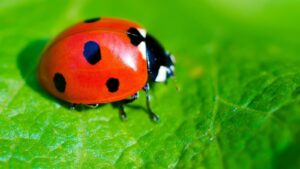
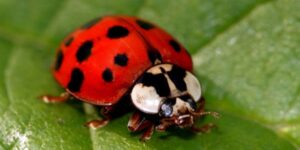
Left: Ladybug (Image by GuideYourPet); Right: Asian lady beetle
Dragonflies
Dragonflies are deemed to be these hideous, mammoth flying insects, and although they play the part, their larvae are the type to kill themselves because of stressors from a predator, even if they are not around. They are mostly innocuous, yet they end up causing more harm to themselves. On a less suicidal note, dragonflies will consume mosquitos, aphids, gnats, and grasshoppers that tend to harm your plants, and at the same time, act as a pollinator. It is usually rare to have dragonflies in ones’ garden, knowing that not everyone has a river or a pond in their backyard, but creating a water source can surely attract them; alternatively, a water barrel can come in handy.
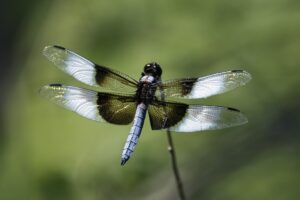
Widow skimmer
Moths
Moths are unnecessarily despised, despite the fact that there is no specific reason to dislike them! Yes, they might bite off some fabric from your clothing, but instead of focusing on the one ‘negative’ factor, let us define them by more of their positive ones. Just like butterflies, moths pollinate flowers as they seek nectar (impacting seed production). Moth caterpillars benefit plants by eating them since the plants eaten by them have evolved special chemicals which can make them less appealing towards harmful insects and pests, so on a more long-term basis, they greatly impact plants. Additionally, when moth caterpillars cut down dying plants into hummus, they act as great decomposers, thus given the name “shredders.” This acts as charity for detritivores who play an essential part in food webs. Though keep in mind that the appetite of the moth will determine its helpfulness in the garden. Cutworms (usually a moth caterpillar that’s smooth and curls into a ‘C’ shape when disturbed) and the invasive gypsy moths are known to have a ravenous appetite. But as a wandering nomad, the wise moth is commonly found in places with high elevations such as mountain tops and also across seasides, but many can be found helping out in your garden.
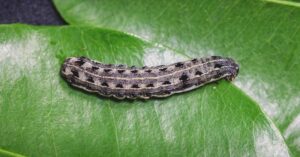
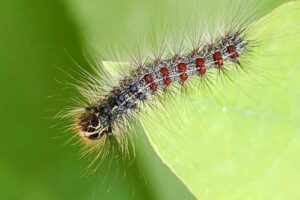
Left: Large yellow underwing caterpillar/cutworm; Right: Gypsy moth caterpillar
Spiders
A fact that will make you pity spiders (unless you are an arachnid) is that they came in the 29th place for being the most hated ANIMAL, which can be reasonable for their hideous features, but there is more than what meets the eye. It is hard to identify spiders based on a couple of their characteristics if you are not an expert, being that alone, there are 1400 species in Canada. The most common ones you will find in your garden are web-spinning spiders such as the barn funnel weaver, wolf spider, and crab spider, which all happen to be harmless. What is communal amongst these different spiders is that they manage pest control by eating cockroaches, aphids, wasps, etc. By doing so, they keep their population intact. Many spiders are already welcome because of insects, but crab spiders especially enjoy flowers where they can lurk and easily catch their prey, whereas wolf spiders are attracted to mulch.
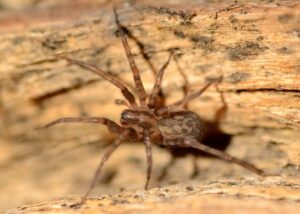
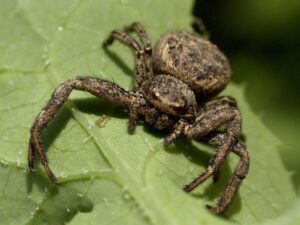
Left: Barn funnel weaver; Right: Ground crab spider
Pill Bugs (Rolly Pollies)
Just as dragonflies and ladybugs, pill bugs are not portrayed as negatively as centipedes or beetles but are not labelled under any particular “category” for their characteristics. As rolly pollies are harmless, they contribute to the nutrition of plants through decomposing decaying matter. So don’t be apprehensive to be lazy every now and then when it comes to the leaf piles and overall garden debris in your backyard; pill bugs love it!
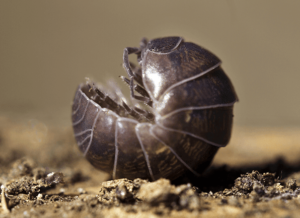
Pill bug
Millipedes and Centipedes
A long body seemingly accompanied by a thousand legs; these arthropods can sometimes put you off. But despite their appearance, they are effective recyclers, decomposers, and predators that feed on pests. The slower of the pair: millipedes eat, shred, and mix organic matter into the soil. This speeds up the decomposition and gives other decomposers, such as bacteria and fungi, more surface area to work. As they do, they also aerate and help improve soil quality by adding more nutrients. Except, too many millipedes can be harmful to seedlings. As long as there isn’t an outbreak of the millipede population, they will remain relatively harmless and quite beneficial to your garden. In fact, there have been studies that suggest millicompost (using millipedes to decompose wastes and raise soil quality) might be more effective than vermicompost, which involves using worms to decompose wastes and increase soil quality.
Closely resembling millipedes, they, too, help keep your garden well. Centipedes help control the pest population by preying on soil-dwelling pests, such as slugs, and even help out in homes as well.
Both millipedes and centipedes enjoy living in dark, damp areas as it provides moisture for them. They lack the thin layer of wax that some plants and insects have that prevents them from losing water quickly.
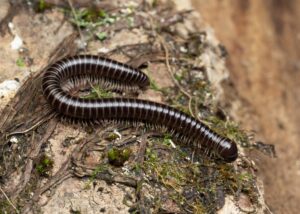

Left: Parajulid millipede; Right: Brown centipede
Spined Soldier Bug
Their name, a perfect fit as they are ready to patrol your garden; the spined soldier bug is one of the best at reducing the number of pests in your garden. They may look similar to the western conifer seed bug and the brown marmorated stinkbug, an invasive pest, but spined soldier bugs have a general wide shape and pointed shoulder blades. These soldiers eat a wide variety of pests, such as the invasive Colorado potato beetle, caterpillars, larvae, and other bugs. Occasionally, a spined soldier bug may be seen sucking on a plant to rehydrate, but this doesn’t harm the plant in any way. To attract these insects, plant perennial flowers around your garden, and they may decide to settle in.
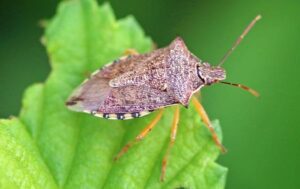

Left: Spined soldier bug; Right: Brown marmorated stink bug
Green Lacewing
Also known as an aphid lion, green lacewings and their larvae are the apex predators of aphids. They eat other pests, such as mites and miniature caterpillars, but to them, nothing can beat a bowl of aphids. A single green lacewing larva can eat up to 100-400 aphids a day. Their voracious appetite makes for a good insect for pest control. Green lacewings like to live in places with cover and food. Plants like grass, shrubs, and trees provide green lacewings with a proper habitat to carry on their lifecycle.

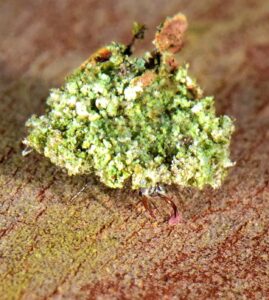
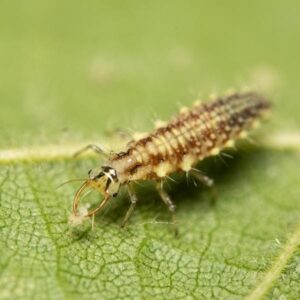
Left: Green lacewings; Middle: Green lacewing larva covered debris for camouflage; Right: Green lacewing larva
Ground beetles (Or Carabidae)
Believe it or not, beetles help pollinate your garden, but they can be both good and bad for your garden. The invasive Japanese beetles are known to devastate gardens, while six-spotted tiger beetles help by feeding on small pests. These helpful beetles are easy to tell apart from others as their elytra are comparable to the colour of shiny, metallic green car paint with a few white dots at the bottom.
Another pest predator is the Harpalus beetle. They not only control the population of pests, like cutworms and aphids, but they also help reduce the spread of weeds. These beetles wander the surface of your gardens and eat any seeds they can find, usually the seeds of weeds that land onto the soil. If you’re worried that they’ll eat the seeds planted in your garden, don’t be since they only eat seeds on the surface. Harpalus beetles prefer not to waste energy on digging up seeds buried beneath the ground when they could just search for seeds on land.
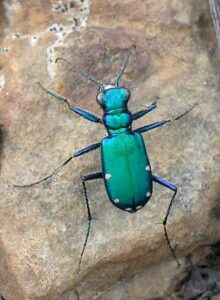
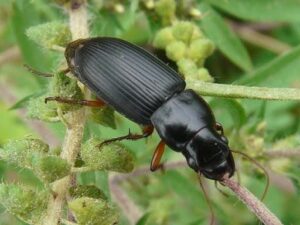
Left: Six-spotted tiger beetle; Right: Harpalus beetle
Improving the wellness of plants in your garden could come in the form of utilizing predator-like insects like spiders, dragonflies, or green lacewings, to control pest populations or to welcome a variety of insects that decompose decaying matter. Regardless, the strange characteristics of some of these “pests” should not determine their usefulness in the garden.
Sources:
Ladybugs: https://dengarden.com/gardening/Ladybugs-Facts
Dragonflies: https://www.gardeningknowhow.com/garden-how-to/beneficial/attracting-dragonflies.htm; https://drecampbell.com/dragonfly-benefits-garden-how-attract-them/
Moths: https://www.wildlifepreserves.org/species-guide/why-moths; https://extension.umn.edu/yard-and-garden-insects/cutworms
Spiders: https://extension.psu.edu/barn-funnel-weaver-spider; https://www.growveg.com/guides/the-benefits-of-spiders-in-the-garden/
Pill Bugs/Rolly Pollies: https://www.cleggs.com/news/are-roly-polys-good-or-bad-for-your-garden/
Millipedes and Centipedes: http://www.omafra.gov.on.ca/english/crops/facts/livingsoil2.htm; https://hortnews.extension.iastate.edu/millipedes; https://www.nwf.org/Educational-Resources/Wildlife-Guide/Invertebrates/Millipedes; https://en.wikipedia.org/wiki/Soil_regeneration; https://india.mongabay.com/2018/06/the-unglamourous-millipede-is-a-strong-soil-nutrition-builder/; https://en.wikipedia.org/wiki/Vermicompost; https://gardeningcalendar.ca/articles/beneficial-insects-good-bugs-to-encourage-in-your-garden/; https://www.sciencedirect.com/topics/immunology-and-microbiology/millipede; https://www.trulynolen.ca/why-do-centipedes-live-in-basements/
Green Lacewing: https://www.insectidentification.org/insect-description.php?identification=Green-Lacewing; https://organiccontrol.com/green-lacewings/
Ground beetles (Or Carabidae): https://www.hgtv.com/outdoors/landscaping-and-hardscaping/welcome-the-six-spotted-tiger-beetle-to-your-garden; https://bangordailynews.com/2018/04/12/living/that-seed-eating-ground-beetle-may-be-your-gardens-best-friend/; http://www.omafra.gov.on.ca/english/crops/insects/BMSB-flyer.pdf; https://www.hgtv.com/outdoors/gardens/planting-and-maintenance/Nine-Ways-To-Deal-With-Japanese-Beetles
Others:
https://www.insectidentification.org/insects-by-state.php?thisState=Ontario
https://cwf-fcf.org/en/resources/encyclopedias/fauna/insects/beneficial-insects.html
https://www.invasivespeciescentre.ca/
Image Sources:
Ladybug and Asian lady beetle:
https://i.natgeofe.com/k/47bb0144-f7d1-4a28-a102-834a590f6e57/ladybug-leaf.jpg
https://plunketts.net/blog/ladybugs-vs-asian-lady-beetles
Widow skimmer dragonfly:
https://thumbs-prod.si-cdn.com/XlmHsioal-oxM1vyKmfsllZWX0E=/fit-in/1600×0/https://public-me
Large yellow underwing caterpillar/cutworm and gypsy moth caterpillar:
:https://inaturalist-open-data.s3.amazonaws.com/photos/15608/large.jpg?1545361686
https://www.adirondack.net/images/gypsy-moth.jpg
Barn funnel weaver spider and ground crab spider:
https://inaturalist-open-data.s3.amazonaws.com/photos/9593183/large.jpeg?1502098836
https://inaturalist-open-data.s3.amazonaws.com/photos/273364/large.jpg?1545510482
Pill bugs/rolly pollies:
https://www.actionpest.com/images/pill-bugs.png
Parajulid millipede and brown centipede:
https://inaturalist-open-data.s3.amazonaws.com/photos/51693222/large.jpg?1568788482
Spined soldier bug and brown marmorated stink bug:
https://upload.wikimedia.org/wikipedia/commons/a/a0/Pentatomidae_-_Halyomorpha_halys-001.JPG
Green lacewing and green lacewing larvae:
https://insectary.com/wp-content/uploads/2014/10/Green-lacewing-adults.jpg
https://arc-anglerfish-arc2-prod-tronc.s3.amazonaws.com/public/JUA34LHPYRFHRD4IOQU5DPV2AM.jpg
https://cdn.shopify.com/s/files/1/0306/6360/6331/products/lacewinglarvae_grande.jpg?v=1595324423
Six-spotted tiger beetle and harpalus beetle:
https://upload.wikimedia.org/wikipedia/commons/d/d7/Cicindela_sexguttata_Fabricius_1.jpg

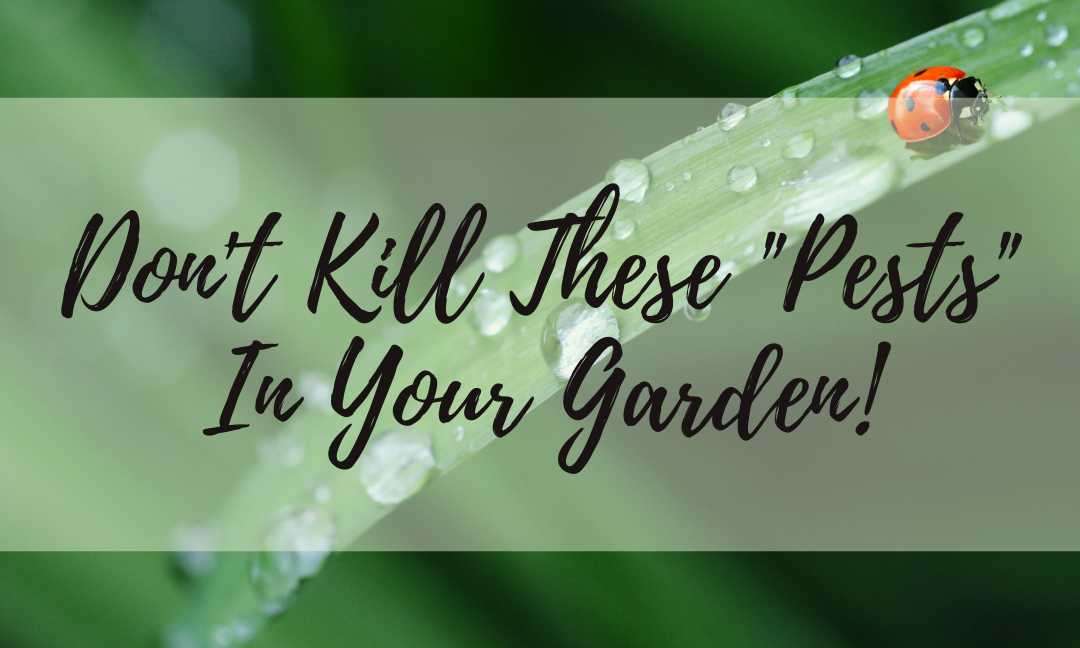
Wow, marvelous blog structure! How long have you ever been running a blog for? you made blogging look easy. The total look of your website is wonderful, as smartly as the content material!!
Thanks so much! The blog has been running since April 🙂